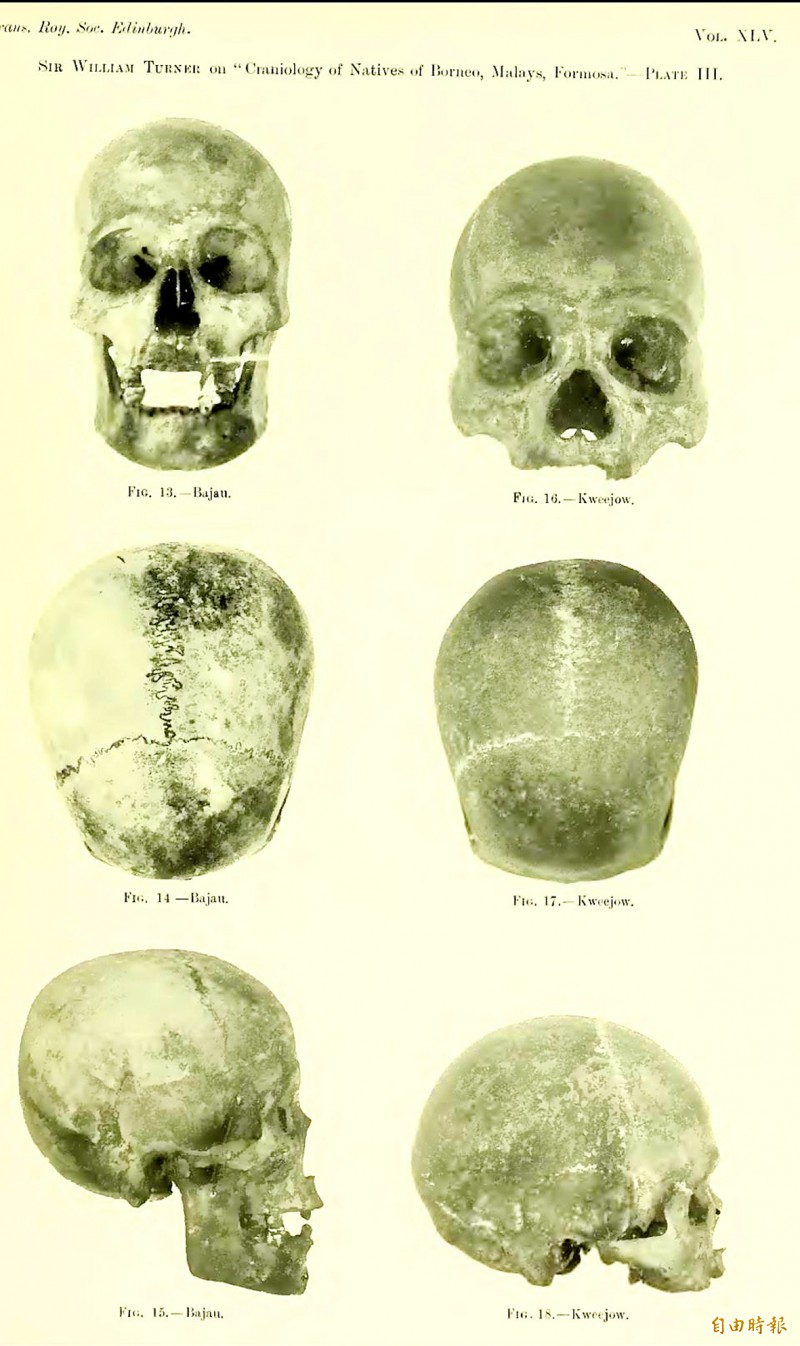《TAIPEI TIMES》 Villagers seek DNA tests on Edinburgh skulls before return

An illustration with photographs of skulls believed to be those of Paiwan warriors killed during the 1874 Mudan Incident, which are in the possession of the University of Edinburgh, is pictured in an undated photograph. Photo: Tsai Tsung-hsien, Taipei Times
MUDAN INCIDENT: Residents of Pingtung County’s Mudan Village want scientific proof the remains are those of their ancestors slain in 1874
By Tsai Tsung-hsien and Jake Chung / Staff reporter, with staff writer
Before an offer by the University of Edinburgh to return 12 skulls purported to be those of Paiwan warriors killed during the Mudan Incident (牡丹社事件) is accepted, DNA tests should be conducted to ensure the skulls are those of Aborigines, not Japanese soldiers, Mudan Village (牡丹) residents said last week.
The 1874 incident was a Japanese military expedition against Paiwan in Mudan, called Botan in official English records at the time, for the killing of 54 sailors from the Ryukyu Kingdom.
The sailors had been aboard a vessel that was shipwrecked off the southern coast of Taiwan in 1871 returning to Miyako Island from Naha, Okinawa.
Sixty-six survivors of the shipwreck were attacked when they intruded into Paiwan territory, and 54 were killed.
While the Ryukyu Kingdom had been a vassal state of the Qing Dynasty for about 200 years, Japan used the incident to advance its interest in taking control of the Ryukyu Islands — it had claimed them as the Ryukyu Domain in 1872 and annexed them completely in 1879 — by claiming that its expedition against the Paiwan was in retaliation for the death of Japanese sailors.
According to Mudan Township Office records, Japanese soldiers took 12 Paiwan skulls back to Japan with them.
The University of Edinburgh gained possession of the skulls following the death of William Turner, an English anatomist who had served as president of the university from 1903 until this death in 1916, who had them in his collection.
On Tuesday, Mudan Village Warden Pan Chuang-chih (潘壯志) said that the villagers wanted to make sure the skulls were those of their ancestors and not Japanese.
“We have high hopes and all evidence points to the skulls actually being of Aboriginal origin, but we wish to obtain scientific proof,” Pan said.
The repatriation of remains is different from the repatriation of cultural relics, as the remains should be interred so that the spirits of the ancestors can enter the afterlife, and should not be put on display, he said.
Such remains should be buried with the proper traditional ceremonies, he added.
The Pingtung County Government said it would forward the villagers’ request to the Council of Indigenous Affairs, and it would try to expedite the process of returning the skulls if testing confirms they are of Aboriginal origins.
Meanwhile, Pan said that the results of the latest research into the Mudan Incident would be published in 2024, on the 150th anniversary of the incident, and be made available at the Mudan Incident Memorial Hall, so that Taiwanese would understand the importance of the incident in modern history.
新聞來源:TAIPEI TIMES













